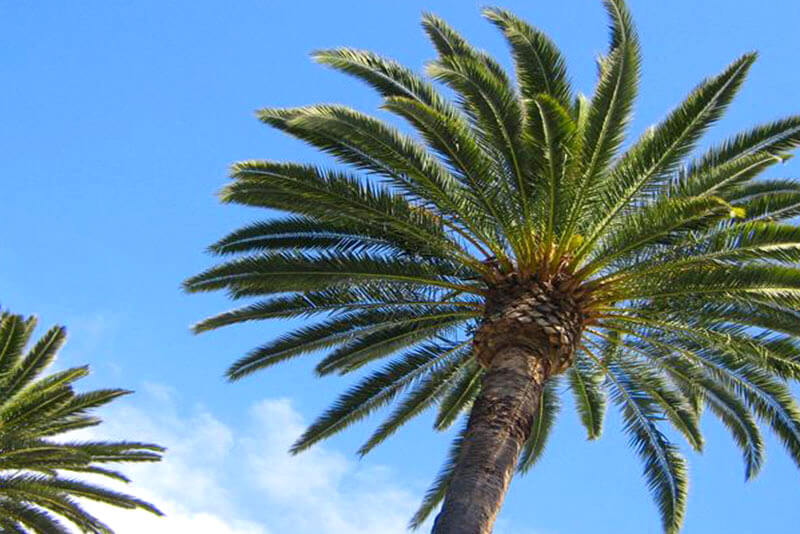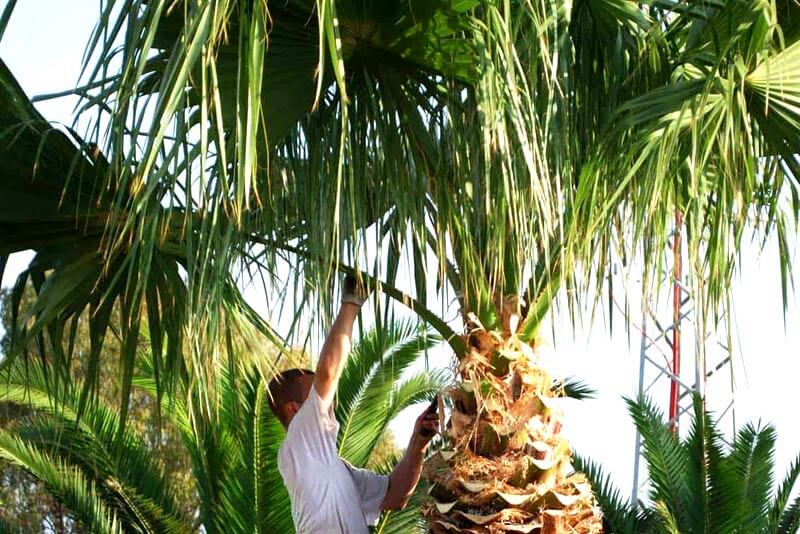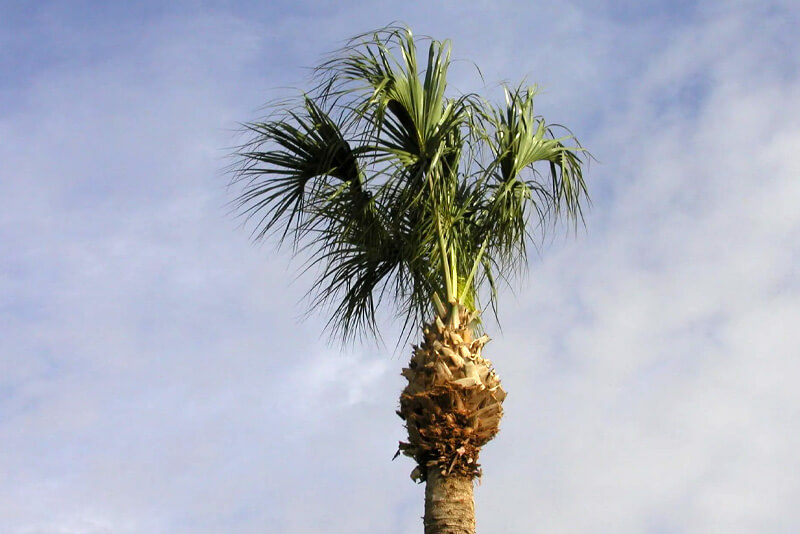Queen palm trees can be a great addition to your backyard with their tall trunks and spread-out leaves. They are low-maintenance and grow beautifully in wet, sunny climates. However, to get the best out of your Queen Palm, you need to trim it regularly.
The cost of trimming a Queen Palm is $179, based on national averages for this year. However, the cost of trimming a Queen Palm tree usually depends on the tree’s height. The taller a Queen Palm is, the more expensive it will be to trim. Mature and fully grown can cost up to $1,200 to trim.
In this article, we will learn more about the factors affecting queen palm tree trimming costs and find out if you can DIY your project. Read on.

Tree height
The cost of trimming your Queen Palm will depend mainly on the height of the tree. This is because the taller a tree is the harder it is to get to the branches and the higher the risk of injury. Taller trees also require machinery and more labor hence the higher cost.
Here is a table showing the cost of trimming a Queen Palm based on tree height.
| Height of the tree | Cost range (per tree) |
|---|---|
| 10 to 15 ft | $60 - $75 |
| 15ft to 25ft | $100 - $350 |
| 25ft to 40ft | $200 - $425 |
| 40ft to 60ft | $350 - $945 |
| 60ft and above | $750 - $1,200 |
Note; Queen Palms usually grow to 50 ft and taller on maturity. The more trees trimmed at a time, the lower the total cost.
Location
Another major determining factor when it comes to palm trimming cost is location. Some locations have a higher level of competition between tree care companies leading to lower prices while it is the opposite for other locations leading to higher costs.
The following table shows the cost of trimming a Queen Palm based on location.
| Location | High |
|---|---|
| California | $213 |
| San Diego | $225 |
| Las vegas | $379 |
| Florida | $315 |
| Phoenix | $400 |
NOTE; Medium-sized trees are generally trees between 15ft to 25 ft in height.
Can you trim a Queen Palm by yourself?
Well, you can trim a Queen Palm by yourself to save on the cost of hiring a professional tree service. However, there are some considerations to make before you begin the project. They include;

1. The height of the palm tree
Shorter palm trees are the best options for DIy trimming. This is because their branches are easier to reach, little to no machinery may be required and the risk of damage to the worker and the tree is low.
However, for tall and fully mature trees, trimming them yourself may not be the best option. This is because Queen Palms can grow to about 50ft when mature. To trim a 50ft tree, professional knowledge, and experience are greatly required to avoid permanent injury to the tree and the workers.
2. The condition of the tree
A healthy Queen Palm tree can be trimmed by a DIYer as it can survive any damage that may occur during the trimming process such as over-trimming. However, for trees dealing with pests and diseases, this is not recommended.
These trees require professionals that know how best to handle and trim the tree without causing further damage to the tree. Trimming a diseased or pest-infested tree by yourself without any previous idea may result in the death of the Queen Palm tree.
3. Knowledge of how to trim a Queen Palm
Before trimming a Queen palm by yourself, you need to do deep research to find out the basics. This includes which time of the year is the best, what tools are needed, how to go about the process, and lots more.
Researching these important points allows for a better understanding of what it takes to trim a Queen Palm without damaging the tree. It also allows for a better outcome. However, if you can’t grasp the basics, just hire a professional tree to survive.
4. Availability of tools
When trimming your Queen palm yourself, make sure to have all the necessary tools needed to complete the job. Having the right tools allows for a faster and better job. You can do some light research to find out the tools you might need to trim your tree yourself.
Mature and tall trees may require tools and machinery that aren’t easily accessible to the layman and may cost more to get than hiring a professional tree service with access to them already.
What time of year do you trim palm trees?
The best time of the year to prune a Queen Palm is September through early November for the best results. This time of the year is usually after summer and before winter giving the tree enough time to recover and grow better.
When pruning a Queen Palm make sure to not prune too many fronds at one time as this stresses the tree. Start by cutting any dead fronds with a saw a couple of inches from the palm stem. Avoid cutting into the stem as that can cause damage to the tree permanently.
How often should I trim my Queen Palm?
In general, Queen Palm trees should only be trimmed when dead fronds are visibly weighing down the trees. These dead fronds can be identified easily as they are usually brown, dry, and grim-looking. This usually happens about 1-2 times yearly for growing trees and once yearly for mature trees.
Remove dead fronds and old fruit stems. Once the old fronds turn completely brown, it’s safe to prune them from the palm. Just make sure you wait until there is no green left on the palm fronds. Use a hand pruner for smaller palms and a sharp pruning saw for larger leaf stems.
What happens if you over-prune a palm tree?
Over-trimming a Queen Palm can be very dangerous to the tree as healthy fronds are removed. The removal of healthy, green fronds is not recommended because those are the leaves that carry on photosynthesis to produce food for the tree.
Removing healthy palm fronds removes food from the palm and causes it to use up stored food. Over-trimming of a Queen Palm can also cause other issues like potassium deficiency which if left untreated can lead to the death of the palm.
Over-trimming also makes the new buds of Queen Palm more susceptible to wind damage.












